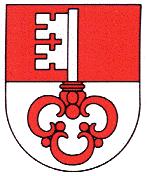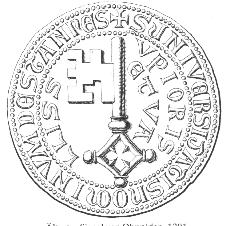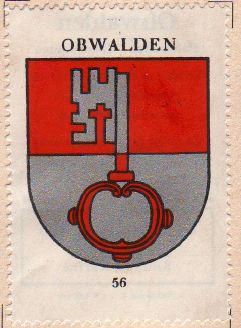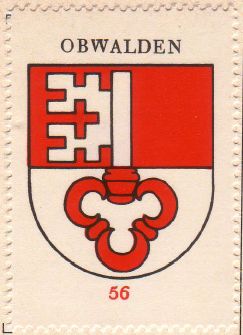Obwalden: Difference between revisions
Knorrepoes (talk | contribs) No edit summary |
Knorrepoes (talk | contribs) |
||
| Line 24: | Line 24: | ||
{|align="center" | {|align="center" | ||
|align="center"|[[File:obwalden2.hagch.jpg|center]] <br/>Variations of the arms in the [[Kaffee Hag Wappen der Schweiz|Kaffee Hag albums]] 1914-1960 | |align="center"|[[File:obwalden2.hagch.jpg|center]] <br/>Variations of the arms in the [[Kaffee Hag Wappen der Schweiz|Kaffee Hag albums]] 1914-1960 | ||
|align="center"|[[File: | |align="center"|[[File:obwalden6.hagch.jpg|center]] <br/> | ||
|} | |} | ||
Revision as of 12:25, 10 November 2013
| Heraldry of the World Civic heraldry of Switzerland - Schweizer Wappen / Armorial de Suisse |
OBWALDEN
Official blazon
Origin/meaning
Obwalden and Nidwalden originally were part of the Canton Unterwalden. The arms of Unterwalden were a shield divided horizontally of red and silver, and were derived from the banner. These arms were first mentioned in 1478.
| The seal form 1291. |
After the division of Unterwalden, Obwalden continued the old arms until the mid 18th century. In 1747 the key was first added to the shield. The key itself was already used in 1291 on a seal of the territory Unterwalden ob dem Wald, the later Obwalden. All later seals showed only the key, but always without a shield. The key itself is the symbol of St. Peter patron saint of Unterwalden.
Since 1747 the two are combined and the arms have not changed since.
| Variations of the arms in the Kaffee Hag albums 1914-1960 |
|
Literature : Mühlmann, L. : Wappen und Fahnen der Schweiz, Bühler Verlag, Lengnau, 1977 and 1997.




